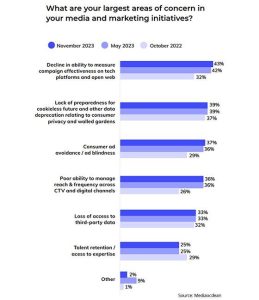There are countless blog posts written on how to improve your Shopify SEO, yet many of them fail to mention some fairly simple things you can do to improve your Google rankings.
In this piece, we’ll look at 2 things you can do to establish trust, which is one of the elements Google considers in rankings. Plus 1 weekly task you can do to grow your site and traffic.
Omitting these three items could in fact be keeping you from a first-page ranking. So let’s dive in.
1. Publish a Phone Number for Customer Service
Many of us who own Shopify E-commerce stores are sole proprietors, and really don’t have staff to work the phones. At the same time, getting a Google Voice number and setting up a mailbox takes no time at all. Just make sure you check it every now and again or your customer reviews may suffer.
Having a number published shows there is a human being behind the business, and search engines like that. I can all but guarantee the sites out ranking you have a phone number published in their header or footer.
Think of it this way: Google and Bing (as well as other search engines) like to reward excellent user experiences. Making a customer search for a way to contact you is not optimal.
What you probably don’t want to do is use your mobile number. Phone numbers and email addresses are scraped off of websites by bots every day. And you don’t want your mobile that easy to find for them. Even if you use Google Voice, you’ll probably end up with a lot of spammy voicemails. It’s still worth the effort and aggravation though, from an SEO perspective.
2. Have These Three Pages on Your Site
Every Shopify store needs to have these 3 pages to be in Google’s good graces:
- Shipping and returns policy
- A privacy policy
- Website terms and conditions
These again are all about trust. The search engines look for these to determine the credibility of the business. The content of your policies isn’t as important as simply the fact that they exist, although they all should be fair.
There are a lot of templates available on the web for creating privacy policies as well as site terms and conditions. Your Shopify store should plainly explain what kind of tracking technologies you use, if any, and what you do with any data you collect.
You should also have a paragraph about some of the states that have enhanced privacy regulations. As of this writing, California is the most advanced, so you should read up on the California Consumer Privacy Act (CCPA) and make sure your page addresses it.
As mentioned, I highly recommend you use a template from a professional service. Most small businesses don’t have a legal department to craft one by hand, so it’s the way to go to make sure you’re adequately covered.
3. Build More Categories, even if you don’t put them in Navigation
Stepping away from trust for a moment here, and into traditional on page e-commerce SEO.
Long Tail Searches and Filtering Results
Shopify natively, as well as with some additional 3rd party plug-ins, allows you to filter and facet products in any category. So if a customer goes to your Dresses category, they can fairly easily click down to just black dresses.
Great for the user, but not optimized for SEO the way we want it to be, since those filtered results are not read as individual pages by Google.
The Problem
The problem with relying on filtering and faceting is that it doesn’t change the page content aside from the products themselves. These results pages cannot be fully optimized for their tags and <H1> headings. And as mentioned above, in most cases the filtered results are blocked from being indexed.
The Solution
If you want to rank when someone searches for that perfect little black dress for New Years Eve, we need a category specifically for that.
What we want here is:
- A unique page title (Little Black Dresses for New Years)
- A unique meta description
- A unique text block on the page describing that category
That’s what will get the collection to rank, or at least give it a chance to.
In Shopify, every collection gets added to the XML sitemap by default, so it will get found by the search engines, even if you don’t link it in navigation. The XML sitemap is what search engines use to find and discover content on your site even if they can’t reach a page through links on your website.
How Do I Know How Many Categories to Create?
I usually recommend researching what we call “long tail searches” that are fairly popular on building a collection or two a week that targets them.
For example, “Dresses” would be a big search, but “Short Plaid Dresses” would be considered more long tail. If you find some of those that bigger websites aren’t targeting, you can carve yourself out a few little search niches, and attract more customers organically.
But don’t build a category for every possible facet. Check out your next steps below for some recommendations.
Your Next Steps
Pretty simple: Execute! The first two tips are pretty much one and done. The policy pages may need to be updated from time to time, but that’s about it.
As for your collection build out, you’ll want to get into the habit of trying to add one or two a week. A great place to look for ideas on this one is your search terms report, either in the Shopify dashboard, or Google Analytics if you have that set up correctly.
Digital & Social Articles on Business 2 Community(16)
Report Post





